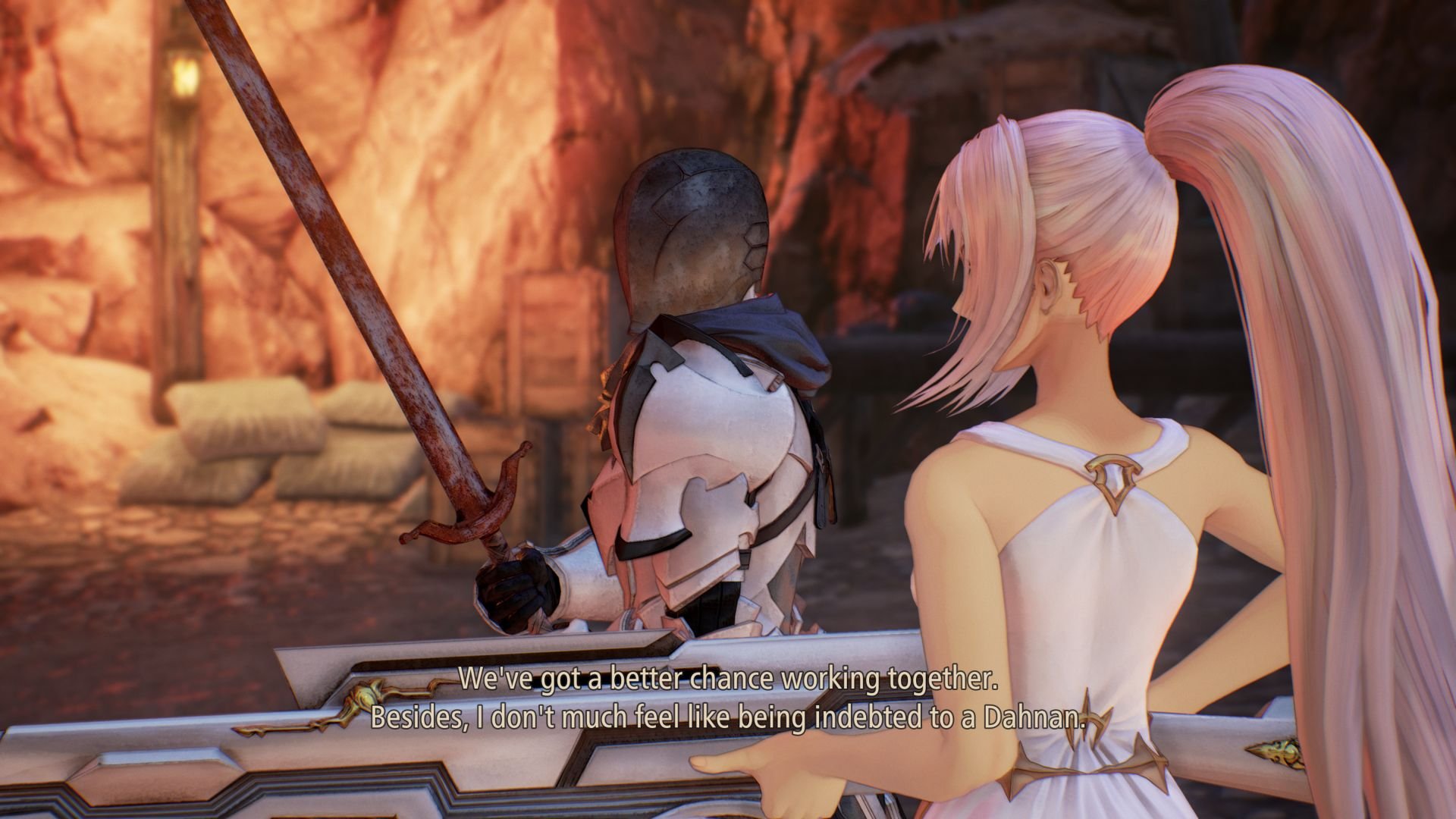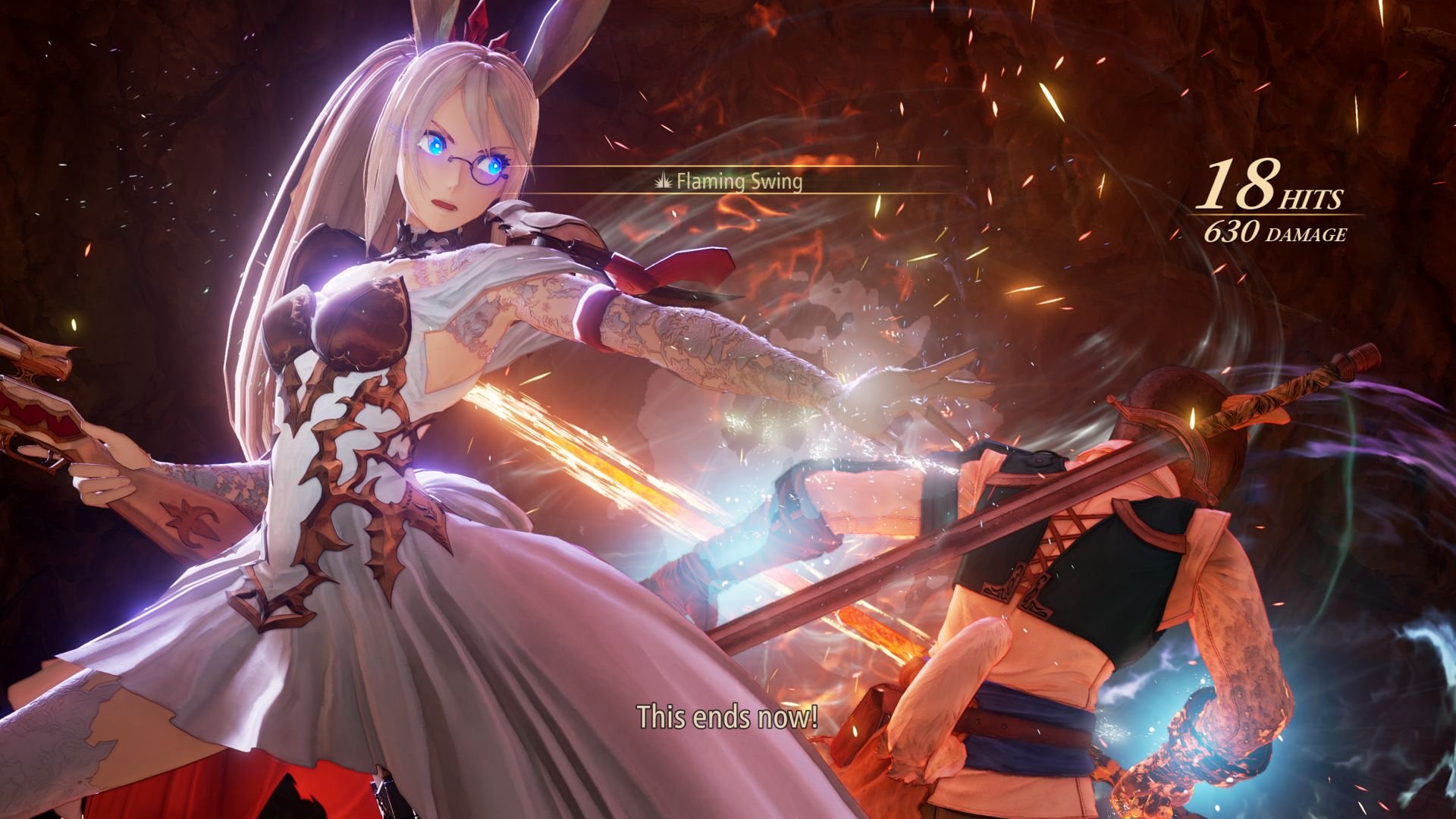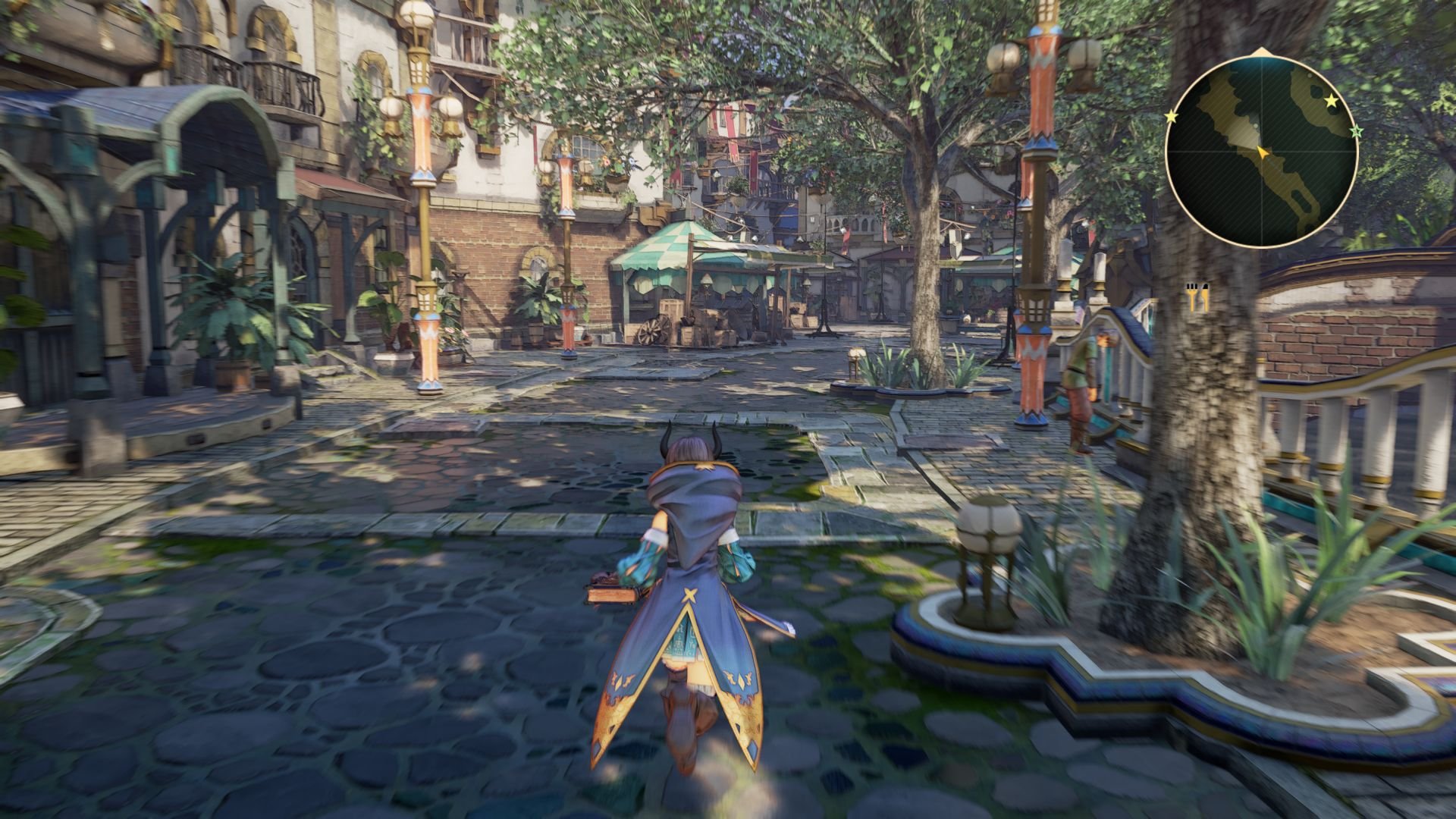A Strong Will.
Tales of Arise is the latest in the Tales franchise, a real-time action-orientated JRPG series that has always felt like a breath of fresh air when compared to the more turn-based or strategic offerings from a wealth of Japanese studios. While my history with the series is limited to completing only a handful of their catalog, I still found immense enjoyment in how fast and frantic the combat has been, and Arise is no different. While its narrative can get a bit too much sometimes, and its indulgence in conversations, a bit too repetitive, Arise is at its core, a mechanically sound adventure that often excels more than it stumbles.
As I sank my blade into the game’s final boss, a sigh of relief passed over me. Not one of just satisfaction, but that I had finally put the game to bed, after a tough and challenging grind. It’s not that I didn’t enjoy the past 45+ hours, but it’s that a good chunk of it felt bloated in some cases and the exposition dumps of the last 5-6 hours started to derail a lot of what I truly enjoyed about the journey. While the story to take back the Dahnan homeworld from a group of invaders known as the Renan starts with a simple hit list of targets, the game then dives into the background elements of who the Renan invaders are and their mysterious history, as well as personal stakes for each of the game’s six characters.
As you progress through the several zones that make up the game’s world, you’ll meet a collective group of individuals each beset by some aspect of the invasion, and how it has impacted their lives to a significant degree. From one of our protagonists, a slave named Iron Mask, to the invader noble in Dohalim, there is a vast assortment of opinions and information that each character shares, and frankly, it can get a bit too much sometimes. For example, during the game, a long-hidden secret is laid bare, one that shakes everyone to their core. The team disbands and you run around talking to each of them individually. Then, once you have done that, the team regroups and has another conversation on the matter. Then once you go back to pushing through the level, special conversations which appear in the bottom right can be triggered for another 4-5 conversations on the exact same matter, but through different perspectives. Had this been a one-off, I would be fine with it, but this dance happens a few additional times. I respect the hell out of the game for giving us such a diverse group of characters where each of them has something to say on the matter, but this aspect of over-explaining happens dozens of times, making for a lot of repetition in the narrative.
While there are numerous conversations that I’ll hold dear, to those I laughed out loud at, as well as a fairly interesting one that deals with how Shionne’s gun disappears from combat, the game goes to great lengths to explain every minor detail with these moments, as well as those that take place when the group stops to rest or cook food at a nearby camp. It is very clear that Tales of Arise is really proud of its characters and has created the depth needed to fully realize them for those that want it. You can skip many of them or choose not to engage with the conversations, but for as repetitive as they can be sometimes, some feature crucial information to not just the story, but things that help define the cast to a significant degree. It is these conversations where you’ll see much of the character’s relationships play out and how they showcase where some of the bigger story beats rely on those connections happening.
While Iron Mask will eventually become known as Alphen, his time as a slave has shaped him greatly, and the relationships and hardships he has had along the way have molded him into a man who will stop at nothing to protect those he cares about. It’s not long before he encounters Shionne, a Renan deserter with her own agenda, aligning herself with Alphen in order to achieve her own goals. They are soon joined by a secretive mage in Rinwell as well as the son of a freedom fighter in Law. Each of these youthful characters comes with a lot of baggage that places them with doubts of their own worth and skill, and yet are a great pair to have in combat and in conversation. Dohalim, a Renan noble, and his guardswoman, Kisara, eventually join as well, fleshing out the group with a fresh perspective. This allows the team to essentially come from every walk of life, creating diversity in ways that truly helps the game in its storytelling and its diversity in explaining that story.
While Alphen and Shionne are essentially the main protagonists, you can run around and take part in battles as any of the team, pressing a few buttons to make that happen. You can also swap to party members during combat as well, should a better tactic work instead of what you entered into combat with. While all six members of your team can take part in combat, only four are on the field at any given time. You can summon in those reserve members when their skill attack is ready, such as Kisara’s being able to stop a charging enemy with her shield, Law breaking through defensive opponents, to Rinwell canceling and using an enemy’s magical attack against them. When enemies are nearly defeated, you can pull off big elaborate attacks with each pairing of characters as well, even if seeing some of them for the 150th time can get a bit stale after a while.
Each character can be customized either by choosing the type of AI that runs your team, or by unlocking and setting up particular attacks and skills for them to pull from. Each of these attacks is assigned to X, Y, and A, with B being used for jump. Eventually, you’ll unlock the ability to grant a second set of attacks to use on the field alongside your original set, using LT to pull up three additional attacks. These can all be customized and with a ton to pull from, you’ll bring a wide variety of attacks to the battle. Each attack will earn experience as well, granting you additional attacks as you push through certain milestones. I will say that some of the ariel attacks can last a bit too long and I’d have to stop attacking so Alphen can slowly drop to the ground, often missing out on a briefly vulnerable foe during the transition.
Each attack or passive ability that you gain is through the Skill Panel board, an arrangement of skills and passive buffs such as being able to resist an initial K.O., to entirely new attacks and skills. This is where you’ll customize how certain characters function as you’ll use points earned in battle as well as through the game’s numerous side activities to purchase these new skills. Some of these are unlocked when characters hit certain milestones or realizations during the story. This reliance on earning a good chunk of points through side quests makes even the most trivial one truly important as this game can get seriously challenging as you move on from area to area. I would say that without any doubt, this is probably the most challenging Tales game I’ve seen so far, but again, my experience with the first couple is limited at best.
The cast themselves range greatly in combat, from basic sword skills in Alphen, gun-based targeting in Shionne, blocking enemy rushes with Kisara’s shield, to casting and canceling spells with Rinwell, you’ll have a very different time using each of your companions. Granted, battles still consist of the same basic steps with jumping, dodging and rolling, swapping targets with LB, to each of the face buttons representing your chosen skills. Regardless, if you want to play ranged with Shionne while rolling out healing spells, you can do that while your more offensive attackers in Alphen, Law, and Dohalim dish out damage. There is a certain flexibility here amongst the chaotic battles that can ensue, but with how fast you’re able to pull off attacks, special team-up skills, and more, combat is organically fun when you start to have more tools at your disposal.
With items to gather, weapons to craft, costume pieces to unlock, and shops to engage with, you’re going to be constantly upgrading and changing out your gear. While you can set a costume piece, or dress-up item to remain the standard, regardless of what you pick up, you’ll find a lot of gear that will make future battles far easier. This does lend itself to a bit of grind in tracking down some items, but you’ll likely want to in order to push some of the later stages as some boss encounters, which are often long tiring affairs, can get a bit brutal. You can also cook at campsites to boost certain stats, especially if a certain person makes a particular meal. Each of these systems is not anything new by any means, but greatly serves a purpose in aiding to making combat more enjoyable as you’re able to hold your own with new items and greatly needed buffs. Campsites also work as fast travel spots, so moving from area to area is usually a simple matter, except when the story prevents you from fast traveling, making some moments in the story feel unnecessarily longer than they should be.
One of the more groan-inducing aspects of Tales of Arise is in the digital store, which will flash up an exclamation point every time you open the menu. While there are some really nice costumes, there are combat and experience boosters for artificially leveling your characters which are never a good thing to see. While I don’t feel I ever needed them. creating the solution for the grind you’ve created yourself is never a good look and most of the items in this store are just sad attempts to fill the game with unnecessary microtransactions. That said, the costumes are fairly well priced, but the new Sword Art Online collaboration pack is insanely priced for what it actually offers.
From a visual standpoint, Tales of Arise is stunning, making it likely the best look JRPG that isn’t focused on a more realistic art direction. Colors pop from everything in the environment to gorgeous towns that are filled to the brim in detail. Some of the pulled-back effects reminded me of Scarlet Nexus, where the visuals have this line art look when you are farther away, pushing in more detail and color as you get closer. It’s a very neat effect that allows the game to have this very unique look to it in a lot of cases. Every location you travel to is just gorgeous in its presentation, with a wide assortment of fantastic creatures and bosses that really make this game stand out. Character models for the main cast are great, and it’s only some of the NPC’s where you see a lack of that same passion. Regardless, Tales of Arise is insanely beautiful around every corner.
When Tales of Arise was first shown off, I was really excited to get my hands on it. Tales of Vesperia was a really enjoyable adventure, and other more action-focused JPRG’s like the Ys series are installments I am always excited to play. I would say without question, that even despite the annoyances I have with the repetitive dialogue here, some story choices, and some combat issues, that Tales of Arise is one of the best of the traditional-looking JRPG’s I’ve played in a long time. The cast of characters is vastly interesting, and combat itself was almost consistently a joy, even when diving into the 35th battle to hopefully have that rare crafting ingredient drop. I will say that the game can feel a bit long in its story, with a moment in the game where you feel like things are about to wrap up, and then you’re presented with another dozen or so hours. Regardless, Tales of Arise is pretty damn fun and certainly worth it for JRPG fans and is one of the most recent to not feel instantly dated out of the gate.
Developer - BANDAI NAMCO, BANDAI NAMCO Studios. Publisher - BANDAI NAMCO, Namco Bandai Games America Inc. Released -September 9, 2021. Available On - Xbox One, Xbox Series S/X, PS4, PS5, Windows. Rated - (T) Alcohol Reference, Blood, Language, Suggestive Themes, Violence.
Platform Reviewed - Xbox Series X. Review Access - Tales of Arise was purchased by the reviewer.














